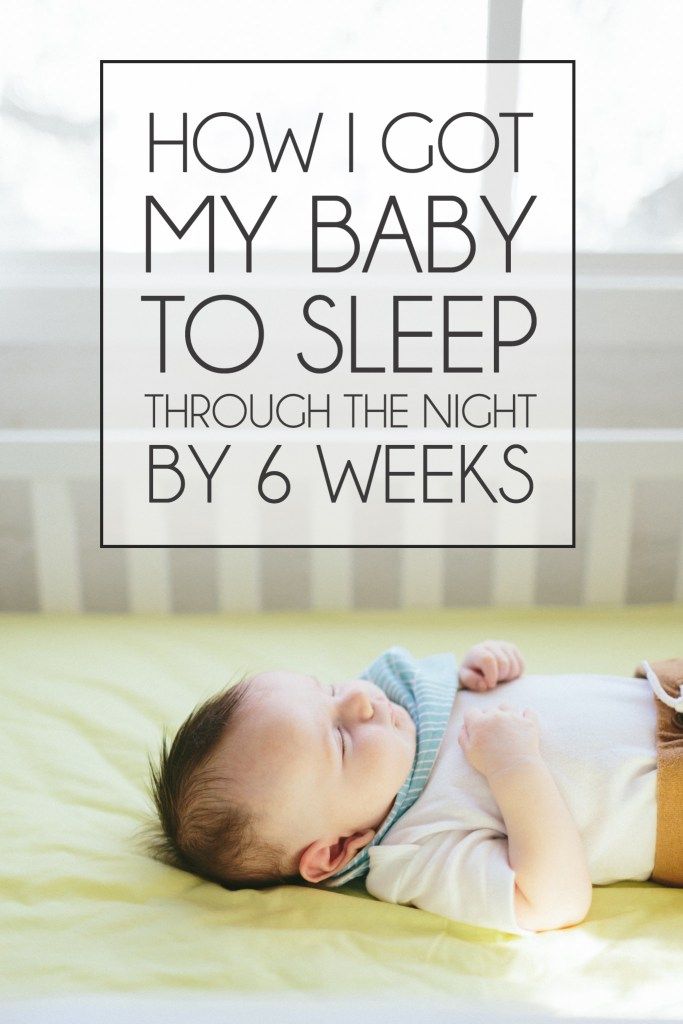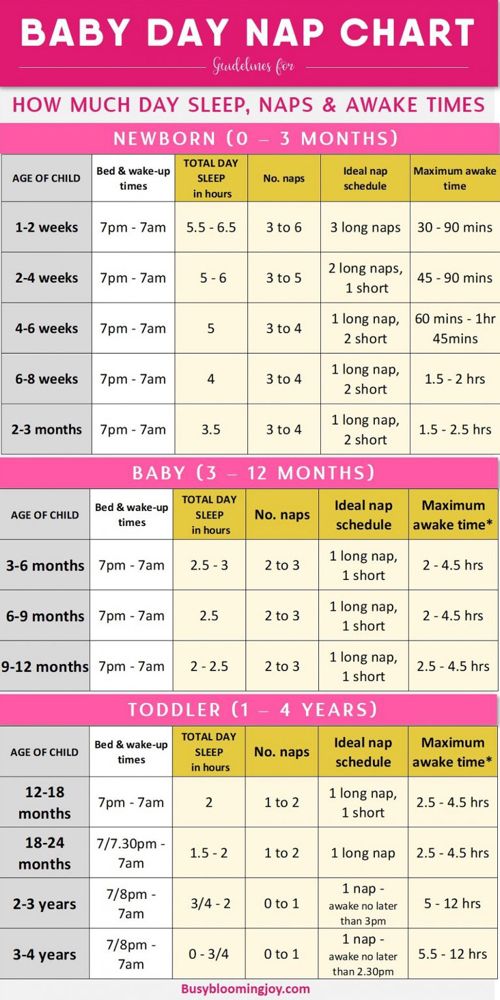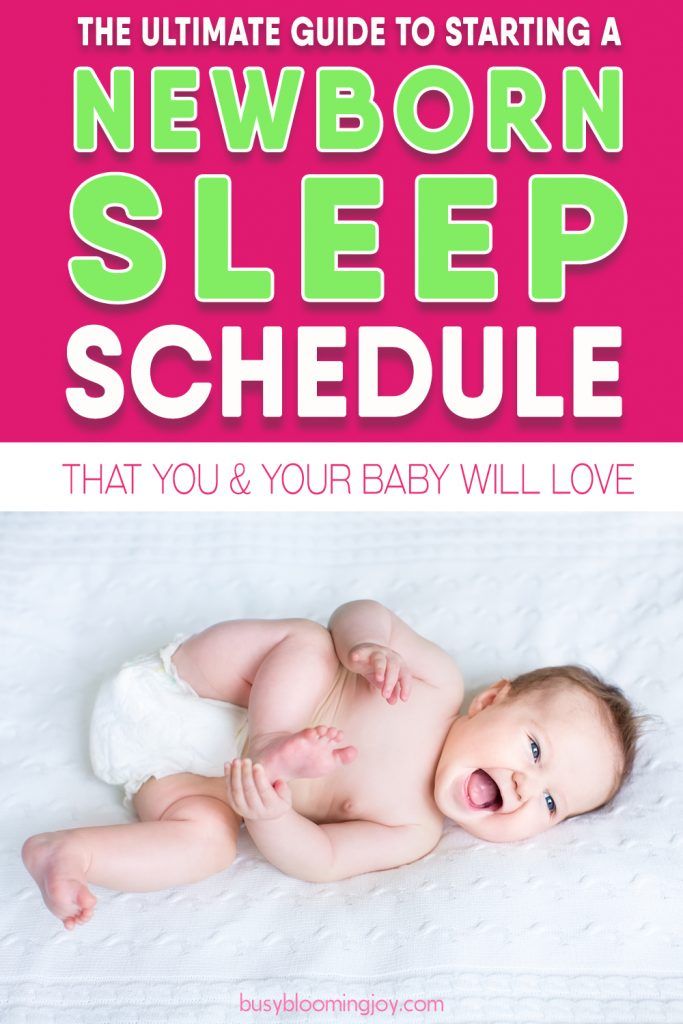Baby sleeping through feedings
Sleepy Baby – Why And What To Do
Nobody likes to disturb a sleeping baby, but sometimes a baby can be too sleepy for their own good. At times like this they may need you to take action.
Your newborn baby needs to nurse actively for one or both breast at each feed. Offer the second breast after they seem to have finished at the first, although they may not want both sides at every feed.
What makes a baby sleepy?
Recovering from birth: In the first few days, some babies are sleepy or uninterested in feeding. It’s especially true for small babies, after a difficult labour or birth, or if you received drugs for pain relief during labour.
Jaundice or an infection may make a baby sleepy. Newborn jaundice is normal but frequent breastfeeding helps prevent it becoming a problem.
Not enough milk: Your baby may sleep to conserve energy if they are not getting enough food. They may also sleep longer that is good for them if they are apart from you.
Is my baby too sleepy?
To gain weight and stimulate your milk production, expect your newborn to:
- Breastfeed effectively at least 8–12 times in 24 hours
- Feed actively from one or both breasts at each feed, swallowing regularly.
- Nurse at least every 2–3 hours from the start of one feed to the next, with one longer sleep of 4–5 hours.
- Have periods where they breastfeed on and off for several hours, usually in the evening.
- Gain weight from day 4 and regain birth weight by about two weeks.
Look at our page Beginning Breastfeeding for more information. If your baby is too sleepy to do all these things they may need your active help to ensure they are nursing effectively and getting enough milk.
Is my baby getting enough milk?
A baby may lose up to 7% of their birth weight during the first few days. From around day 3-4, expect them to start gaining, and to regain their birth weight by 10-14 days. Many breastfed babies gain around 200-235g (7-8oz) as week for the first 2-3 months. If you baby consistently gains less, or they haven’t regained their birthweight by 14 days, seek skilled help to assess whether they are getting enough milk. What comes out is a sign of what has gone in, so counting dirty nappies can be a useful guide between weighing sessions. For more information to help you know if your baby is getting enough milk in the first few days, you could read our article here about signs of effective feeding in the early days. And then after the first few days, this article will help you decide if your baby is getting enough milk.
If you baby consistently gains less, or they haven’t regained their birthweight by 14 days, seek skilled help to assess whether they are getting enough milk. What comes out is a sign of what has gone in, so counting dirty nappies can be a useful guide between weighing sessions. For more information to help you know if your baby is getting enough milk in the first few days, you could read our article here about signs of effective feeding in the early days. And then after the first few days, this article will help you decide if your baby is getting enough milk.
| Age | Dirty nappies per 24 hours |
|---|---|
| 1-2 Day | 1 or 2 greenish-black tarry meconium poos |
| 3-5 days | At least 3 green transitional poos |
| 5+ days | At least 3-5 yellow, loose unformed poos the size of a 2p coin or larger |
Remind your baby to nurse
If your baby is too sleepy or groggy to rouse themselves every few hours, you will need to wake them to feed to ensure they get enough milk. This will be easier if your baby is in a light sleep cycle: watch for rapid eye movements under their closed eyelids, arm and leg movements, sucking activity and changes in their facial expression.
This will be easier if your baby is in a light sleep cycle: watch for rapid eye movements under their closed eyelids, arm and leg movements, sucking activity and changes in their facial expression.
- Aim for your baby to feed at least 10 times in 24 hours, including at least once at night
- Encourage active nursing on the first breast, watching and listening for signs of swallowing.
- Use breast compression (see below) to keep your baby nursing actively.
- Offer the other side in the same way. You can switch back and forth several times if it helps your baby stay awake and feed.
- Encourage cluster nursing whenever your baby is more alert.
- Give expressed milk if they aren’t feeding well.
- Keep them close by—day and night—so they don’t sleep too long and you don’t miss their feeding cues.
Also try
- Dimming the lights and keeping your surroundings quiet and peaceful.
- Keeping the room temperature at around 18°C or undressing your baby a little if the room is warm.
 Being too hot can make a baby sleepy.
Being too hot can make a baby sleepy. - Unwrapping any blankets.
Newborn feeding cues
Signs of interest in feeding include:
- Mouth movements; smacking or licking his lips
- Sucking on lips, tongue, hands, fingers, toes, toys or clothing
- Rooting, head bobbing or nuzzling against whoever is holding them
- Fidgting and squirming a lot
- Fussing
- Crying – a late sign of hunger.
Do offer feed generously. A newborn won’t find it easy to feed well, if they have to wait and reached late hunger signs.
Helping your sleepy baby
Positioning and attachment
Getting a deep, comfortable latch is crucial. If your baby is not latched on well at the breast, they will have to work harder to get your milk. They may tire easily and fall asleep. Sometimes just a small adjustment to the way your baby comes to the breast can make a huge difference. An LLL Leader can provide individual suggestions tailored to your circumstances. If your breasts are engorged, gently hand express a little milk and/or ease swelling back with your fingertips to make it easier for your baby to latch on deeply and prevent you getting sore. See our longer article about Positioning and Attachment for more help on how to help your baby latch well, feed effectively and be comfortable for you.
If your breasts are engorged, gently hand express a little milk and/or ease swelling back with your fingertips to make it easier for your baby to latch on deeply and prevent you getting sore. See our longer article about Positioning and Attachment for more help on how to help your baby latch well, feed effectively and be comfortable for you.
Copyright Suzanne Tobin
Seek skilled help early on if you are finding breastfeeding difficult or uncomfortable.
Laid back breastfeeding
Try letting your baby lie on your body with their chest and tummy against you as you recline at about 45 degrees. If they can snuggle up close to your chest for periods of time, even when sleepy or during light sleep, they will often instinctively seek the breast and attach deeply and comfotably even during light sleep. This can be done skin-to-skin or with you and your baby lightly clothed. Watch for signs your baby is stirring and gently encourage feeding. Spending time relaxing like this can make a real difference to how well your baby feeds and how much milk you make. Our page on Comfortable Breastfeeding has more ideas.
Spending time relaxing like this can make a real difference to how well your baby feeds and how much milk you make. Our page on Comfortable Breastfeeding has more ideas.
Breast compression
If your baby starts to doze at the breast, this technique will help him breastfeed actively and take more milk.
- Cup your breast with your hand, near your chest wall, thumb opposite fingers in a C shape. Keep your hand well back from the nipple area.
- Wait while your baby breastfeeds actively, with their jaw moving all the way to his ear. When they stop swallowing, compress your breast firmly. They probably start swallowing again. Hold it squeezed until they stop nursing actively, then release your hand.
- Rotate your hand around your breast and repeat step 2 on different areas of the breast as needed. Go gently—this should not hurt.
Try switching breasts at least two or three times during each feed—when your baby comes off the first breast on their own or when breast compression no longer keeps them breastfeeding actively.
Express milk for your baby
Until your baby gets the hang of feeding you may need to do some work for your baby. If they aren’t latching at all, or is not feeding well and gaining weight, then expressing your milk will help establish milk production. The earlier you start, the sooner you’ll produce plenty of milk. Hand expression is often easiest at first but when your milk comes in combining hand expression with pumping can be most effective.
Giving expressed milk
First, encourage your baby to nurse at both breasts. Watch for swallowing and use breast compression an switch nursing until they stop drinking and start to doze.
Next, give your baby expressed milk until they have had enough. (For more on how to give additional milk, our article here). Giving your baby your expressed milk after breastfeeding can help them overcome sleepiness and feed more effectively next time.
Then, once your baby has settled, express from both breasts switching back and forth and using compressions and hand expression to get the available milk. Store this milk in the fridge ready for the next feed.
Store this milk in the fridge ready for the next feed.
Aim to complete this process within about an hour.
Avoid bottles and dummies
You can give small amounts of expressed milk using a spoon, flexible feeding cup or syringe. If you decid to use bottles for larger amounts, you can give the bottle in a way that helps protect breastfeeding. For more information on ways to give your baby milk and bottles see our article on Bottles and other tools. An alternative is to use a nursing supplement: this acts like a straw to deliver extra milk through a tube along your breast as your baby nurses, avoiding the need for bottles. Our article Nursing Supplementers explains more.
Don’t give up too soon
If your baby doesn’t respond quickly to your efforts to get him to breastfeed more often and more effectively, don’t give up. Keep your baby fed, Keep your supply protected and Keep your baby close. You may find our article on Getting breastfeeding back on track after a tricky start helpful. Check with your doctor to eliminate any medical reasons and contact your local LLL Leader to find one-to-one breastfeeding help. You can find support and encouragement from breastfeeding mothers in your local LLL Group too.
Check with your doctor to eliminate any medical reasons and contact your local LLL Leader to find one-to-one breastfeeding help. You can find support and encouragement from breastfeeding mothers in your local LLL Group too.
Written by mothers of LLLGB. Photos courtesy of Ellen Mateer and Suzanne Tobin.
Further Reading
Comfortable Breastfeeding
Positioning and attachment
Engorged Breasts – Avoiding & Treating
Hand Expression of Breastmilk
Is my baby getting enough milk?
My Baby Needs More Milk
Nursing supplementers
Jaundice in Healthy Newborns
Getting back on track after a tricky start – the Three Keeps
My baby won’t breastfeed
Bottles and other tools
Other websites
Biological Nurturing™: www.biologicalnurturing.com/video/bn3clip.html
Natural Breastfeeding Position video, Nancy Mohrbacher:
Benefits of skin-to-skin contact: www.kangaroomothercare.com
Books
The Womanly Art Of Breastfeeding. LLLI, London: Pinter & Martin, 2010
LLLI, London: Pinter & Martin, 2010
This information is available to buy in printed form from our shop.
Copyright LLLGB 2020
Updated June 2022
Getting breastfeeding on track after a difficult start – the “3 Keeps”
When you have early breastfeeding problems, it can feel as if it’s “all gone wrong” and the dreams you had about feeding your baby are in ruins. Fortunately, babies are very adaptable and resilient, and so are their mothers! With time, patience and, if necessary, skilled help, it is almost always possible to get feeding back on track after a difficult start. It is always possible to have a close, warm, happy feeding relationship with your baby – even if it might look different from what you had expected. It is important to act quickly, as soon as there are signs that things aren’t going well, but even if more time has passed, things can still get better.
Parents sometimes worry that if their baby isn’t breastfeeding well, or at all, in the first few hours, days or weeks after birth, it will never happen. While breastfeeding in the first hour after birth is ideal, the window of opportunity for babies to start breastfeeding, and to get better at it, is much longer than this. The early feeding reflexes, which keep babies seeking and attaching to the breast, last for at least two to three months. Where there is milk, there is always the possibility of breastfeeding.
While breastfeeding in the first hour after birth is ideal, the window of opportunity for babies to start breastfeeding, and to get better at it, is much longer than this. The early feeding reflexes, which keep babies seeking and attaching to the breast, last for at least two to three months. Where there is milk, there is always the possibility of breastfeeding.
Sorting out breastfeeding problems can feel overwhelming. There seems to be so much to do, and you might feel you have to do it all at the same time! It is helpful to know what is urgent and what is less urgent. This can help you to work out what to do in what order, and how best to use your time and energy.
It is possible to restart your milk production after stopping breastfeeding. It is even possible to start milk production if you have never been pregnant! [i] But it is usually much easier to get your milk supply going if you have just given birth – your body expects to make milk at this time.
It is easiest to increase milk production in the first month or so after birth, when your breasts are most receptive. After this, it usually becomes more difficult, because your body is not expecting to make more milk. Even so, some women are able to get a big increase in their milk production later than this. It’s always worth giving it a go, if you want to!
After this, it usually becomes more difficult, because your body is not expecting to make more milk. Even so, some women are able to get a big increase in their milk production later than this. It’s always worth giving it a go, if you want to!
Milk production usually increases quickly in the early days after birth and reaches almost peak production by about 10 days. By about a month after birth, most women are making as much milk as their babies will ever need. Babies need about the same amount of milk each day from one to six months of age (from about six months, as they start eating other foods, the amount of milk that they need starts to reduce).
When your baby is born, even if they are born early, you are already making milk. After birth, milk will only keep on being made if milk is being removed from your breasts. If no milk is removed, your milk will dry up within about two weeks. Your breasts will adjust to make the amount of milk that is being removed from them.
If your baby is feeding well and taking as much milk as they need to feel satisfied and grow well, you will continue to make plenty of milk for your baby – or two or more babies, if you have more than one!
Whenever a baby is not feeding well enough to take as much milk as they need, or is not feeding at the breast at all yet, the risk is that your breasts will adjust to making less milk than your baby needs. This is why, if your goal is to breastfeed your baby exclusively (only on your milk) when they are ready, it is vital to make sure that you remove enough milk from your breasts in the early days and weeks after birth. You are removing enough milk if your baby is growing normally and producing wet and dirty nappies as expected, without needing anything other than your milk.
For more information about how milk production works, see our article How milk production works.
The most common reason for a baby not to feed well is that they are not quite getting a deep enough mouthful of breast. When this happens, breastfeeding might hurt, the skin on your nipples may become damaged and/or your nipples might look pointy, like a new lipstick, when your baby comes off the breast. Skilled face to face breastfeeding support usually helps most in this situation.
When this happens, breastfeeding might hurt, the skin on your nipples may become damaged and/or your nipples might look pointy, like a new lipstick, when your baby comes off the breast. Skilled face to face breastfeeding support usually helps most in this situation.
Another common reason for babies not to feed well is that they don’t yet have enough energy. They may be keen to breastfeed, and feed well for a short time, but they get tired before they get as much milk as they need. This group may include babies who were born early, had a more difficult birth, are small, unwell, jaundiced, tongue-tied, etc. They need more time and support (and medical treatment if necessary) until they are ready to breastfeed fully.
If you have any of the risk factors above, it is important to have skilled help with breastfeeding so that you can get off to the best possible start. You can find more information in other articles on our website on:
How milk production works
Increasing your milk supply
If you have done all you can to:
- Help your baby attach deeply to the breast
- Make sure your baby feeds at least 8-12 times in 24 hours
- Keep your baby active at the breast by using compressions and switching sides when your baby stops actively feeding (you can find out how to do both of these here)
but your baby still isn’t growing as expected, or there are other reasons to think that your baby is not getting all the milk they need, then it is important to start expressing your milk quickly. Your baby also needs to be checked by a doctor. Most babies who grow slowly are well, but occasionally slow growth can be a first sign of underlying illness, so it’s important to rule this out.
Your baby also needs to be checked by a doctor. Most babies who grow slowly are well, but occasionally slow growth can be a first sign of underlying illness, so it’s important to rule this out.
Turning feeding around – changing direction
When a baby is breastfeeding but is not feeding efficiently yet and is growing slowly, it is tempting to spend more and more time trying to breastfeed your baby. This can end up being a negative cycle:
- because not enough milk is being removed, milk production decreases;
- because milk production is decreasing, the milk is harder for the baby to remove;
- because the baby is getting less milk than they need, their energy decreases;
- because they are feeding with less energy, breastfeeding becomes less effective and less milk is removed.
Expressing your milk creates a positive cycle:
- because more milk is being removed, your breasts make more milk;
- because milk production is increasing, the milk is easier for your baby to remove;
- because your baby is getting more milk, their energy increases;
- because your baby is feeding with more energy, breastfeeding becomes more effective and more milk is removed.

Active breastfeeding
If your baby is spending a lot of time breastfeeding but is not growing as expected, you may need to limit their time at the breast, to give you enough time to express. Breastfeed while your baby is actively feeding, with deep sucks and swallowing after every one-two sucks. When your baby is only swallowing after every three sucks, or more, they are no longer actively feeding, and it would be more efficient to end the feed and express milk instead. A baby who breastfeeds “all the time” is probably asleep and not feeding actively for much of this time (light, fluttery sucks, very little swallowing).
Expressing milk
This protects milk production by removing more milk from your breasts than your baby is able to take on their own. If your goal is for your baby only to have your milk, your aim will be to express enough milk so that your baby can grow as expected and seem satisfied just on your milk.
How often to express
If your baby is able to get almost enough milk at the breast, you might only need to express once or twice a day. If next time your baby is weighed, they are still growing slowly, increase the number of expressions.
If next time your baby is weighed, they are still growing slowly, increase the number of expressions.
If there is a big gap between the amount of milk your baby is able to get at the breast and the amount your baby needs, you will need to express more often, if your goal is for your baby to be fed only or mostly on your milk. If your baby is not breastfeeding at all, you would need to express at least 8-12 times in 24 hours, which is how many times most babies need to breastfeed.
You don’t need to express regularly (most babies don’t feed regularly), just whenever you can. The important thing is how many times you express in 24 hours – it’s up to you when you do it. Experiment to see what works best. It’s fine to take a break for a few hours to go out or to sleep! More, shorter expressions often work better than fewer, longer ones and it’s fine to stop in the middle of expressing, if you need to do something else. You might find that you get a new flow of milk when you start again. Even if you only have a few minutes, it’s worth expressing.
Even if you only have a few minutes, it’s worth expressing.
How to express
For most women, the best tool for doing a lot of expressing (more than once or twice a day) is a double electric breast pump. Manual and single pumps are very small tools for this very big job, though some people find that they can express plenty with a small pump, or just using their hands. You can find more information about how to express milk here.
Expressing longer-term
Mothers who need to express milk beyond the early weeks may find that they can reduce the number of times they express, while still getting the same amount of milk. You can read more about this (sometimes called the “magic number”) here and find out why it varies so much between women here. Some mothers can get all the milk they need just by expressing two or three times in 24 hours! Some mothers feed their babies exclusively on expressed milk. You can read more about this in the book “Exclusively Pumping Breastmilk”.
For more information about how to increase your milk supply, our article How to increase your milk supply may be of help.
- Keep your baby fed
Babies always feed as well as they can – they are never “lazy” or uncooperative! If feeding is not going well yet, it is because it is difficult for your baby at the moment. They need extra support with feeding until they are able to do all the work by themselves.
If your baby is able to do almost all the work of feeding, breast compression and switching sides when they are no longer actively feeding may be enough to help them get all the milk they need at the breast.
If your baby is unable to get all the milk they need at the breast even with some help, they will need extra milk, for the time being.
How much milk do babies need?
In the first 24 hours of life babies need an average of about 7ml (1 ½ teaspoons) of milk per feed. This roughly doubles every day for the first few days. If you are expressing your milk, for example because your baby was born early, it helps to know how much to aim for:
If you are expressing your milk, for example because your baby was born early, it helps to know how much to aim for:
500ml of milk in 24 hours by 10 days old;
750ml of milk in 24 hours by two-three weeks old.
Some babies need more or less milk than this – these are average amounts. Some babies need as much as 1300ml of milk in 24 hours.
If your baby was born early, they might need much less milk than this at the moment, but this gives you an idea of how much milk they are likely to need when they reach term age and size. It is important to aim for these amounts in the early weeks (if your goal is to feed your baby only on your milk) because it becomes more difficult to increase milk production later on. It is helpful to keep a record of how much you are expressing, so you can see how things are changing over time. If you are not expressing anything like these amounts yet, it is important to find a skilled feeding supporter quickly.
What kind of milk?
The first choice of extra milk is always a mother’s own expressed milk, which is tailor-made for her baby. The second choice is donated milk from another mother. The safest way to get donated milk is from a registered Milk Bank.[ii] When these are not available in the amounts needed, infant formula milk may be necessary.
Formula milk
When you were looking forward to breastfeeding your baby, it can feel disappointing to realise that they need formula milk as well. You might even wonder whether it is worth carrying on breastfeeding, or whether your baby will come to prefer formula milk. It can help to think of formula milk as a kind of medication, to give your baby the energy they need to breastfeed well. You can read here about how to use formula milk strategically to support breastfeeding. It is often possible to reduce the amount of formula milk that your baby needs, as they get better at breastfeeding and your milk supply increases. If you need to use formula milk during the whole time your baby is fed only with milk, you may be able to reduce it after your baby starts eating other foods as well, from about six months.
If you need to use formula milk during the whole time your baby is fed only with milk, you may be able to reduce it after your baby starts eating other foods as well, from about six months.
How to feed extra milk to your baby
There are many options for feeding your baby extra milk. You can find information about choosing and using bottles, cups and more here and about nursing supplementers (a tool that enables you to feed extra milk at the breast while your baby breastfeeds) here. Your feeding supporter can help you decide which options might work for your baby.
- Keep your baby close
Breastfeeding provides more than just milk – it gives you and your baby lots of time to touch, gaze at and enjoy being with each other. These, much more than the milk itself, are what builds strong connections between breastfeeding mothers and their babies. Mothers (and dads, co-parents and other key adults) are able to build strong relationships with their babies when they are feeding in other ways, too.
Skin to skin contact is an amazing way for your baby to connect with the important people in their life. Babies held skin to skin are calmer, more relaxed, warmer, cry less and have more stable heart rates and breathing than babies who are wrapped up. They are also protected against infection by being exposed to the “good bacteria” on your skin. And it feels lovely! You can read more about the magic of holding your baby skin to skin here.
“Wearing” your baby in a sling or carrier is a great way to keep your baby close while you get on with other things. Being carried gives your baby many benefits, including more to look at, physical exercise, and less crying. You can read more about carrying your baby here.
When breastfeeding is stressful
When breastfeeding is difficult for your baby it may become stressful for both of you. Babies who have had stressful experiences at the breast can develop negative associations with breastfeeding. This might happen, for example:
This might happen, for example:
- When a baby is in pain or discomfort after birth.
- When a more sensitive baby is handled in a way they don’t like.
- When milk supply is low, or a baby has a physical restriction that makes attaching and sucking difficult.
A baby who is finding feeding hard may become upset:
- A short time into the feed, when milk flow slows down.
- At the start of the feed, when milk doesn’t come straight away.
- When offered the breast.
- When put in a breastfeeding position.
- When they see the breast.
When feeding isn’t going well, babies may come to associate the breast with feeling hungry and frustrated. They may develop a preference for another feeding method, such as a bottle, if they associate it with feeling full and satisfied.
If you and your baby are in this situation, you might need a “breastfeeding break”. You could stop trying for a few days, while expressing your milk to keep your baby fed and protect your milk supply. When you’re both ready, you can try again.
When you’re both ready, you can try again.
Happy time at the breast
However hard feeding has been, your baby can still discover that the breast is a great place to be, where they feel calm, relaxed and satisfied. Here are some things you could try:
- If your baby has been refusing to feed, then try offering the breast when they are calm rather than when they are already hungry or upset. If your baby is having extra milk, give some or most of their feed by cup, bottle, etc. before letting your baby finish the feed on the breast.
- Laid-back breastfeeding. Allowing your baby to find their own breastfeeding position and to attach themselves can work especially well for babies who have had stressful experiences of being “put” to the breast.
- If you are giving extra milk, try giving it with your baby’s cheek resting against your bare breast.
- Consider using a nursing supplementer so your baby can have extra milk while they breastfeed.
 This can be helpful when milk supply is low.
This can be helpful when milk supply is low. - “Breast-sleeping”. Let your baby end a feed by sleeping with their cheek pillowed on the breast. Babies who are having all their milk by cup, bottle, etc. can enjoy doing this too.
- Take a bath with your baby. Low lighting and relaxing music can help set the scene! Some babies will find their own way to the breast, and even if they don’t latch and feed, the bath can be a good place to learn to feel comfortable near the breast.
- Consider sleeping with your baby. Some babies will attach and feed in their sleep, if the breast is near enough to smell and feel when they stir in the night. Always consider sleep safety before sleeping with your baby in your bed. It is never safe to sleep with a baby on a sofa.
Babies are hardwired to breastfeed
Breastfeeding is an essential survival behaviour and all healthy babies will continue to try for many weeks after birth. As long as your milk supply is protected, and your baby is fed, you and your baby have plenty of time to learn to breastfeed. You can find a feeding relationship that works for you both – even if it isn’t quite what you imagined before your baby arrived. ‘Successful breastfeeding’ can look like many different things for different families.
As long as your milk supply is protected, and your baby is fed, you and your baby have plenty of time to learn to breastfeed. You can find a feeding relationship that works for you both – even if it isn’t quite what you imagined before your baby arrived. ‘Successful breastfeeding’ can look like many different things for different families.
Getting skilled support can help, as can hearing from other mothers who had a difficult start with breastfeeding and have found their way through it. La Leche League groups welcome anyone who is breastfeeding or providing their own milk for a baby or trying to do so. Please don’t feel awkward about needing to give your baby extra milk, in any way you need to, at an LLL meeting! We would love to meet you and your baby. You can find your nearest group here.
Further Reading
My baby needs more milk
How milk production works
How to increase your milk supply
Jayne Joyce & Emily Tammam
LLL Oxfordshire
April 2020
[i] https://www. laleche.org.uk/relactation-induced-lactation/
laleche.org.uk/relactation-induced-lactation/
[ii] LLL’s policy on informal sharing of breastmilk.
Your baby always falls asleep while breastfeeding
09/21/2022
Say the word "sleep" to parents of young children and you can easily provoke a conversation that ranges from how to get more sleep at night, to practicing safe sleep, to why kids like to trick you into thinking you have a schedule. going to sleep. But there are other topics that may not be talked about as much, such as babies sleeping in strange positions (my daughter always ends up in a horizontal position). What about sleep patterns while breastfeeding? You may wonder why your baby falls asleep while breastfeeding and what you can do about it. nine0003
Why do babies fall asleep while feeding?
Actually, it's a pretty simple reason. “Babies fall asleep during feedings mainly because they are satisfied and satisfied,” says Lee Ann O'Connor, International Certified Breastfeeding Consultant (IBCLC). And who can blame them for this? Especially cuddling up so close to your mom.
And who can blame them for this? Especially cuddling up so close to your mom.
In general, don't worry if your newborn sleeps on your chest. “You may be surprised to learn how much sleep your newborn has in the first few weeks of life,” says Sterling Gray-Simmons, Certified Breastfeeding Specialist. “Keep in mind that just as you need to sleep and rest after giving birth, so does your baby. Newborns often have days or even weeks when they are very sleepy and find it difficult to stay awake. Your baby has to adjust to life outside the womb, and that adjustment can be exhausting." nine0003
Not to mention, babies are biologically designed to sleep at the breast, as Grey-Simmons explains. Considering the composition of breast milk, the hormonal responses of infants to breastfeeding, there is definitely a link between breastfeeding and infant sleep patterns. "Knowing that it's okay to see your baby fall asleep while you're breastfeeding gives many newborn moms a sense of comfort," Gray-Simmons says. Sleeping on the chest is considered a healthy sign that the baby is full and satisfied, this condition is often called "milk coma". nine0003
Sleeping on the chest is considered a healthy sign that the baby is full and satisfied, this condition is often called "milk coma". nine0003
How to keep your baby awake while breastfeeding
While it's very valuable to watch your baby try to breastfeed while struggling with sleep, chances are you want to keep him awake to make sure he's feeding enough.
The first tip is to undress the child. Often, during a consultation, a mother complains about a sleepy baby, which she cannot attach to her breast, and the baby is wearing a hat, mittens, T-shirt, pajamas, and he is also swaddled. Even in an adult, a cozy shelter under a pile of blankets causes drowsiness, about the same thing happens with a baby. nine0003
The child needs as much skin-to-skin contact as possible, you can rub your ears or feet, change position, hold a column, wipe with a damp cloth or towel, feed in a well-lit place. Do breast massage so that milk flows more evenly.
You also need to make sure you don't take drowsiness as a sign that your baby is full, even if your baby falls asleep but remains attached to the breast. If you do this, it may cause your baby to put on too little weight and your milk supply to decrease. "Some babies who find it difficult to suckle effectively early in life tend to sleep while breastfeeding, even if they aren't getting enough milk." “These babies often get tired of suckling and fall asleep. They may also stop suckling in desperation because they cannot get milk and fall asleep instead. This may be due to oral restrictions such as short frenulum, high palate, shallow grip." nine0003
If you do this, it may cause your baby to put on too little weight and your milk supply to decrease. "Some babies who find it difficult to suckle effectively early in life tend to sleep while breastfeeding, even if they aren't getting enough milk." “These babies often get tired of suckling and fall asleep. They may also stop suckling in desperation because they cannot get milk and fall asleep instead. This may be due to oral restrictions such as short frenulum, high palate, shallow grip." nine0003
And while it's perfectly normal for a baby to doze off while breastfeeding in most cases, O'Connor says it's important to keep a close eye on breastfed newborns to make sure they don't fall asleep because they're tired or not getting enough milk. “If there is a problem such as a tight frenulum, low milk supply or premature labor, you need to contact a professional who can assess the situation.” nine0003
Also, make sure you pay attention to signs that your child is full or still hungry. “Watch your child, not the clock,” Gray-Simmons says. “Some babies are just very efficient at breastfeeding and may feel full in as little as five minutes, and another baby may suckle for 20 minutes and still not feel full.” Some examples of satiety signals include open and relaxed hands, while tight fists and a tense face are a sign that the baby is still hungry. nine0003
“Watch your child, not the clock,” Gray-Simmons says. “Some babies are just very efficient at breastfeeding and may feel full in as little as five minutes, and another baby may suckle for 20 minutes and still not feel full.” Some examples of satiety signals include open and relaxed hands, while tight fists and a tense face are a sign that the baby is still hungry. nine0003
In general, "in most cases, babies fall asleep after they have had enough milk and their suckling needs have been met."
And mom needs super-strong coffee and friends for this))
Source: romper, 2018
Translation: Churikova Larisa
Image by Freepik
Baby falls asleep while feeding and is malnourished, what should I do?
Babies, after birth, sleep an average of 15-19h per day. Falling asleep occurs on the hands, in the crib, in the stroller or in the process of feeding. Mom is alarmed, because the child does not really eat and is constantly hungry. She walks around his bed with the question that is spinning in her head "to wake up or not to wake up to feed?". What to do if the baby falls asleep during feeding, should I wake the baby to finish feeding? Let's figure it out together.
She walks around his bed with the question that is spinning in her head "to wake up or not to wake up to feed?". What to do if the baby falls asleep during feeding, should I wake the baby to finish feeding? Let's figure it out together.
Why can my baby fall asleep while feeding?
The main reason for falling asleep on the chest is fatigue. Especially in the postpartum period. For the mother, this process was difficult, the child was also tired, he spent a lot of strength and energy at birth and is trying to recover during sleep. nine0003
In addition, suckling is not an easy process, it takes a lot of work to get milk from the mother's breast. As a result, the desire to sleep wins, and the child falls asleep without even finishing the meal to the end.
In addition to fatigue from birth and sucking, several more reasons can be identified:
- The child is full. Most often, this reason occurs in a situation where the baby is fed on demand, and for each squeak they give a breast.
 The kid simply does not have time to get hungry, since the intervals between meals are short and he does not need to eat a lot and longer than usual. nine0062
The kid simply does not have time to get hungry, since the intervals between meals are short and he does not need to eat a lot and longer than usual. nine0062 - Obstructed flow of milk from the breast . When a mother has good ducts, milk flows without much effort, the child does not spend much effort to get it. He eats enough and falls asleep. And in this situation, mom does not have to worry at all. But there is another side, when the ducts are clogged or the mother is very nervous, she begins to produce a stress hormone, which complicates the process of getting milk for the baby. It certainly exists, but getting it for a child turns out to be overwhelming work. As a result, the child falls asleep because he is tired. nine0062
- Undeveloped sucking reflex. Most often, this problem is faced by babies who were born prematurely. Literally after a couple of weeks of training, the situation with the facial muscles stabilizes, and the baby begins to actively suckle the breast.

- The newborn does not latch on to the nipple correctly. As a result, the baby chews more on the mother's breast, in an attempt to properly grasp the nipple. Nothing works out for him, the baby gets tired and falls asleep faster to regain strength. nine0062
- Physical discomfort. The child does not feel well, hence he may be inactive, and his well-being may also affect his appetite.
What can I do to keep my baby from falling asleep while feeding?
If the baby sucks for 3-5 minutes, falls asleep for a short time, wakes up and needs more supplements, the mother needs to adjust her diet and make sure that the baby does not fall asleep during feeding, but eats fully. There are several proven ways to keep your baby awake while breastfeeding:
- Talk to the baby, show him a bright or loud toy, touch different parts of the body, run your hand over the heels, shake the handle, kiss the baby on different parts of the body.

- As soon as the sucking intensity decreases and the baby has eaten very little, gradually remove the baby's nipple from the mouth. If he is hungry, he will start suckling again. The same must be done with the bottle, it can still be twisted.
- Change position or start moving if the baby is in your arms in the cradle position. Shift the baby to the bed, offer the breast while lying down, so you will shake him a little and remove the focus from sleep. nine0062
- If the room is warm, stop feeding and undress the baby. This will take his attention away from sleep.
- Feed your newborn on time. Infants aged 0-6 months can withstand a feeding interval of 1.5-2 hours. Make sure that the child literally “works up” an appetite.
- Focus on sucking intensity and time. If the baby was born prematurely, he can eat longer, as he has little strength and weak sucking muscles. The duration of feeding in such children can vary within 15-20 minutes. If the baby is born on time, then feeding takes 7-10 minutes.
 nine0062
nine0062 - Try to alternate ways of bedtime and do not teach your child to eat before going to bed. Offer to lay your chest in one position, fall asleep in your arms in the other, fall asleep to a lullaby and light swaying in the next. Introduce air sleep in a stroller.
To wake up or not to wake up?
It is worth waking up the baby for feeding when he refuses to eat with his eyes closed. That is, the mother offers the child sleepy feeding, in which he does not eat. In this case, it is worth creating conditions for a soft awakening and offering breasts. nine0003
It is also necessary to wake up for feeding when the child is not gaining weight well or after 2-3 sucking movements immediately falls asleep.
You should not wake up the baby if he actively sucks at the mother's breast for at least 7 minutes, the baby ate the day before before bedtime, he has no problems with weight gain. In addition, if a child is sick, he should not be woken up for feeding, since sleep during illness is needed more than food. Since the child is fully restored when he sleeps.
Since the child is fully restored when he sleeps.
Is it necessary to hold a sleeping baby in a column
Spitting up is a fairly common situation that occurs with babies. For babies who are in a horizontal position, this can be dangerous. He may choke and die. The baby burps for several reasons:
- During feeding, the baby swallows air.
- Overeating. Therefore, by regurgitation, the body frees the stomach from excess food.
- Incorrect position of the baby when breastfeeding or bottle feeding.
Frequent sleep during feeding, provokes problems with laying down and organizing full daytime sleep. Mom tries in every possible way to organize a rhythm for the child, but due to certain circumstances it is not possible to do this. In order to understand the reason and start working on the organization of the rhythm, a systematic approach is needed. On the course "SLEEP OF A BABY, MOTHER IN RESOURCE (+ SZ)", mothers build a rhythm / daily routine, work on separating breasts / sleep, and if desired, mothers go further and teach the child to fall asleep on his own.











